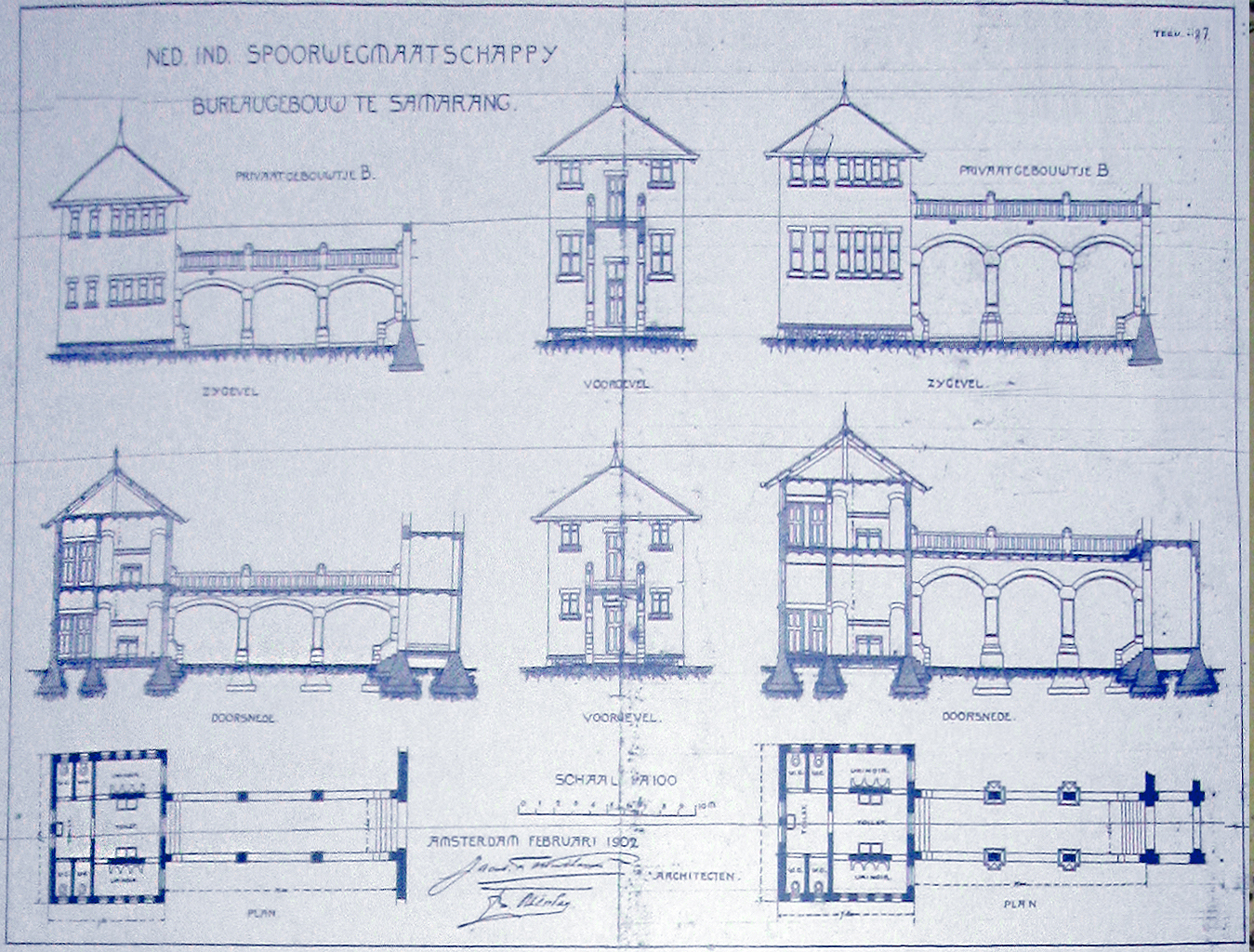1. Lawang Sewu
Lawang Sewu ("Thousand Doors") is a landmark in Semarang, Central Java, Indonesia, built as the headquarters of the Dutch East Indies Railway Company. The colonial era building is famous as a haunted house, though the Semarang city government has attempted to rebrand it. The Former names of this building Administratiegebouw Nederlands-Indische Spoorweg Maatschappij. The Groundbreaking was started in 1904 and Completed in 1919, but it was opened since 1907. Now the Owner is PT Kereta Api (Indonesia railway company). This building shows very strong construction, the wall thick is twice of current brick length. You can see the images and its blueprint below.
 |
| Blueprint of Lawang Sewu building (source: Wiki) |
2. Sam Poo Kong
Sam Poo Kong (Chinese: 三保洞; pinyin: Sānbǎo Dòng), also known as Gedung Batu Temple, is the oldest Chinese temple in Semarang, Central Java, Indonesia. Originally established by the Chinese Muslim explorer Zheng He (also known as Sanbao), it is now shared by Indonesians of multiple religious denominations, including Muslims and Buddhists, and ethnicities, including Chinese and Javanese. One of the relic found there is a text "Let's make meditation by listening the reading of Quran".
3. The Old Town
As stated previously, Semarang is the oldest city in central java, hence many heritage there. It was proposed as world cultural heritage to UNESCO. Semarang Old Town is the location of important point for Semarang city growth. On the site, trading activities involving international cruise lines have been developed since early 20th century. Utilization of steam and gas engines are the common thing at that time. Together with the train stations, ports, Kali Semarang, as well as Chinatown, Kampung Melayu, the site shaped the Semarang region as a whole. There are three key words to understand the Semarang Old City in the early 20th century, there are cosmopolitan, trade, and services. The site also integrated with industrial plants and the natural resources that come from Central Java. So that it gives the impact of modern culture for all cities in Central Java. Colonial architecture appeared and crossed with local conditions, presents the unique character to the site. All of it is because there has been an obvious aim for directing the site as the center of trade and services in Semarang. The main landmark is taman srigunting park along with blenduk church.
4. Simpang Lima
Simpang lima (five cross-road) maybe the center of Semarang city. If most of everycity in Indonesia have alun-alun (field at the center of city), this Simplang lima replaced the old alun-alun that is lost due to development of the city. There you can relax at the park, sightseeing in mall, find the best food or do praying at mosque close to the park.
 |
| Simpang Lima, aerial view (source: Wiki) |
4. Grand Mosque of Central Java
The mosque complex covers 10 hectares (25 acres). There are three central buildings arranged in the shape of a U, with the domed mosque at the centre; all buildings have pitched, tiled roofs, while the central mosque has four minarets. The central roof resembles the roof of a "joglo", the traditional Javanese house, and symbolises the rising steps toward heaven or to gain God's blessing. The long buildings forming the arms of the U house a library and auditorium respectively;[2] the auditorium can hold up to 2,000 people. The architect is Ir. H. Ahmad Fanani and the architectural style is mix of Javanese, Arabic, and Greek. This mosque was established 2006.
5. The Pagoda
If you still need a place to take photo, you could visit Pagoda Avalokitesvara Semarang. Pagoda Avalokitesvara Semarang is Buddhist temple which is inaugurated as the highest and most beautiful temple in Indonesia (By the Museum Rekor Indonesia (MURI) on 14 July 2006 on whirch this temple also officialy opened by Bhikkhu Pannavaro Mahathera.
Enjoy Indonesia, Visit Semarang!
Source:
- Compiled from many sources.
